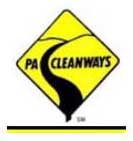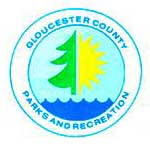|
Home
What
is Illegal Dumping?
Survey
Results:
Research:
Education
Final
Products
Outside
Information
Contact
Us
SLP
Home
|
| The
following is a table of four case studies we conducted this year.
We looked for programs that encouraged prevention and monitoring of
illegal dumping. Most contain elements of education, especially targeting
youth. Others use community groups to keep dumpsites clean, while
some use collection programs of problematic items to keep dumping
to a minimum. |
| PA
Clean Ways |
| PA
Clean Ways is a non-profit organization founded in June of
1990 by “one woman’s commitment to cleaning an
illegal dump near her home.” Today, 124 individuals,
groups, and businesses are partnered with 22 PA CleanWays
chapters across the state of Pennsylvania. They produce a
series of educational materials, including children’s
literature, videos and games. PA Clean Ways also manages adoption
programs of areas, including roads, greenways, trails, waterways
and neighborhood blocks throughout the state. Various recycling
and collection programs are also run by the organization.
For more information, see their website
|
|
|
| Michigan
Coalition for Clean Forests |
| The
Michigan Department of Natural Resources began an Adopt-A-Forest
pilot program in1989. Since then, they emphasize the need
for alternative disposal/reuse options, illegal dumping education,
more enforcement of fines, formation of partnerships with
organizations statewide, and incentives for volunteers and
partners. They run the Adopt-A-Forest program, which allows
volunteers to become responsible for the physical cleanup
of an area. A group called The Trash Team keeps track of activities
statewide and makes executive decisions about the program.
They also maintain a website with a database of known dumpsites
throughout the state.
For more
information see their website |
|
|
| Gloucester
County Clean Communities Program |
The
New Jersey Clean Communities Program was created in 1987 by
the New Jersey legislature through the Clean Communities Act.
Gloucester County’s program is one of several in the
state. The program’s litter pick-up program consists
of four separate components: one day group clean-ups, the
Adopt-A-Road program, the Adopt-A-Stream Crossing program,
and the Adopt-A-Spot program. They also present to schools
on the issue of illegal dumping, and encourage enforcement
of laws through signs.
For more
information see their website |
|
|
| Central
Vermont Adopt-A-Site Program |
The
Central Vermont Solid Waste Management District started the
Adopt-A-Site program in the spring of 1997. Volunteers are
assigned a site, which they promise to keep clean for a year.
Several different components make up an adoption, including
cleanup, beautification, and maintenance. They rely heavily
on donations from local businesses and volunteer hours to
maintain the program.
For more
information, see their website |
|
|
|




